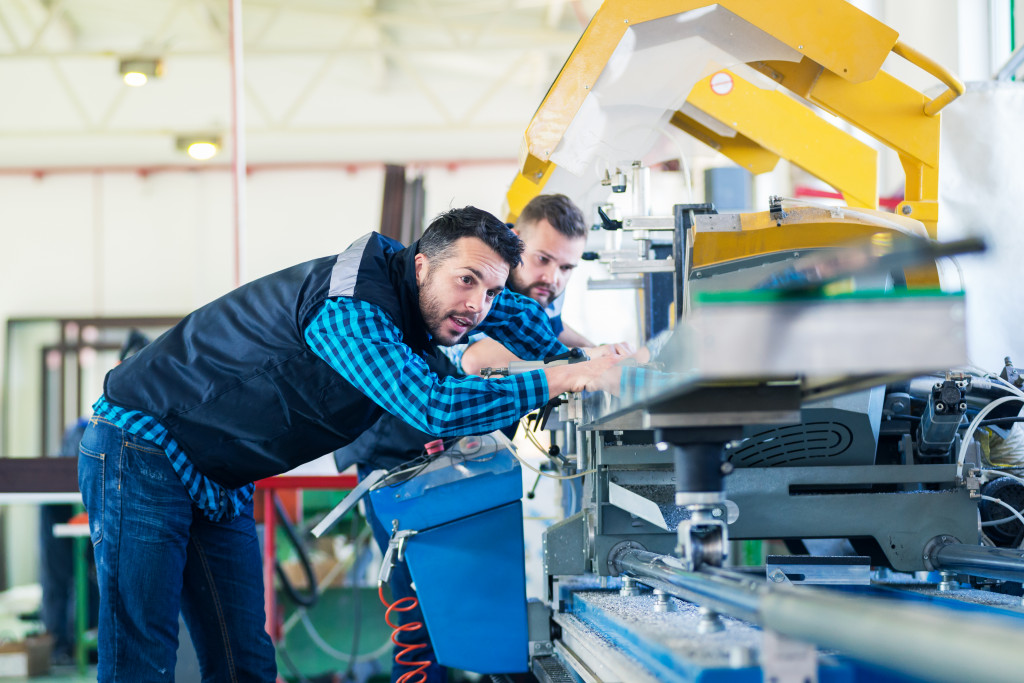Technology is fast advancing, and the demand for better and more efficient production rates is constantly increasing. As a result, many manufacturing companies look at their current operations, looking for ways to further optimize their process. For those in the manufacturing industry, their job is of constant research, trying to find the most effective strategy, new and more efficient systems to employ, and the latest and fastest robots.
Below are some of the current trends within the manufacturing industry and how they can affect the future of manufacturing.
Automation Will Become More Accessible
Throughout history, humans have feared automation, fearing that it will take their job. However, as evidenced by the need for a workforce in the manufacturing industry (which we will dive deeper into later), it’s not exactly true. Instead, automation is a tool that helps businesses and their employees, and it’s only recently that it has seen widespread adoption.
Even those not within the manufacturing industry are making use of automation‘s improvement. Cloud technology basically allows even the weakest of computers to do automated tasks, something many small businesses employ. Nowadays, 3D printers, CAD software, and more accessible robot arms are even more accessible. Even smaller-scale manufacturing companies adopt automation in one form or another, thanks partly due to its availability and cost-efficiency.
Internet of Things and Ultra-smart Automation
To those outside the manufacturing industry, the Internet of Things (IoT) is a curious little trinket that can do something commonplace with an extra layer of wirelessness and automation. A programmable oven may sound fun and futuristic, but it has a bigger application for relevant industries. For manufacturers, having something automatic and programmable can mean the difference between efficient and inefficient production.
Through smart sensors, Arduino trinkets, and an internet connection, almost anyone can rig up a very use-case-specific automation tool that’s not only cheap but also highly accessible. This allows manufacturers to increase their production while decreasing the risk through constant monitoring and updates. Its value is not overlooked, as experts believe that it’s the next big thing for investors.

Predictive Maintenance is Better than Scheduled Repairs
Through the constant innovations in the field of artificial intelligence, combined with the remote monitoring and efficiency provided by IoT, a self-diagnosing machine is entirely possible now. This has given birth to predictive maintenance. Its meaning is simply what the name implies: it predicts potential errors in the system and maintains it to prevent further damage.
This saves companies the time, resources, and manpower needed to constantly fix breaking machines. With manufacturing machines being smart, they can indicate whether a part is broken or needs replacement before it can even affect your operations. This prevents businesses from struggling through moments without profit due to their equipment requiring repairs.
Assistance Through Cobots
As mentioned before, there’s an underlying fear that automation and robots will take away people’s jobs. But the existence of collaborative robots (or Cobots) proves that there’s more to it than that. It’s not just as simple as having a robot do a task humans can- these cobots can help humans achieve their tasks faster and at greater efficiency.
Take, for example, automated picking robots. These robots remove the need for humans to manually go over items and sort the bad among the good products. Humans can then interfere only for quality checks to make sure that the cobot doesn’t miss anything. Because of this, humans can spend their time working on far more mentally activating tasks because the mundane and repetitive ones are automated already.
A Need for Manpower
Many experts believe that almost 5 million jobs and positions in the manufacturing industry will open within the following decade. Unfortunately, it seems like only half of that will be filled. Despite this, bad business policies in the manufacturing and supply-chain industries resulting in employees looking for a factory or truck labor attorney or even filing a class action lawsuit is not uncommon to see.
This lack of workforce added to the current policies that put manufacturing employees at a disadvantage spells potential disaster for the manufacturing industry. Such cases make it seem like the industry is not conducive to new hires, deterring interest despite the utter need for manpower. Fortunately, many companies and governing bodies are putting in the effort to rectify this, so we can all hope to see a change soon.
The manufacturing industry was affected by the pandemic as the workforce needed wasn’t there. Now that the world is recovering, so is the manufacturing industry. We can all hope to see it go back to its feet in the following months and perhaps improve its production capacity and efficiency.
